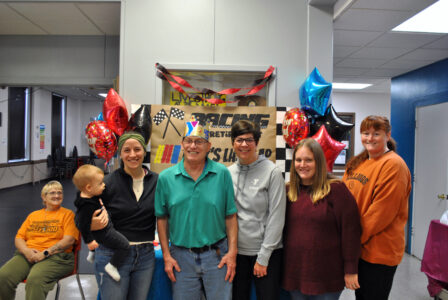Attention, Kmart haunters
By LOU BERNARD
For The Express
There are some ghost stories that never make it to the campfires. We tend to tell scary stories about a haunted house, or a deserted stretch of road… a location that’s got some drama to it. But nobody ever sits down around the campfire and tells a spooky story about, say, a haunted tax office – There’s just no drama there.
You could say the same thing about a haunted Kmart. And yet, I’m about to tell you all about one of those.
Only in Clinton County.
The Kmart used to be on Clinton Plaza in Lock Haven, in the space now occupied by the community center. A little over 20 years ago, the store moved out to Mill Hall, along Hogan Boulevard.
Not long after that, the sightings began.
Toys began to move about on their own, and shopping carts were seen to roll without anyone pushing them. At first, the ghosts were visible only to male employees – Men working in the store would see a Native American dressed in traditional costume, or a man in old-style colonial clothing. The Express ran an article about the sightings on Feb. 6, 1993, by Jim Runkle, who apparently has worked at The Express since the late Cretaceous Period.
At first, only men saw the ghosts… A few months after that, female employees began reporting sightings, as well. Another article, again by Runkle, told that story on April 6.
So why Kmart? It’s a reasonable question. Why, out of all places, would settlers and Indians choose to hang around the local Kmart? They can’t all be such big Martha Stewart fans.
To get the answer to that, we have to go back. Quite a way, in fact – all the way back to 1782.
The Van Campen Massacre.
In April 1782, Lieutenant Moses Van Campen was ordered to present-day Clinton County to investigate the murder of a local man named Culbertson. He and his troops traveled as far as the site of present-day Mill Hall and camped there overnight.
On April 16, they woke up to find themselves surrounded by, essentially, all the Native Americans in the county.
In his narrative, reprinted in John Blair Linn’s history, Van Campen wrote, “On the 15th of April we reached the place at night and encamped. On the morning of the 16th, we were attacked by eighty-five Indians. It was a hard-fought battle. I think we had nine killed, and the rest of us were made prisoners.”
The Natives only lost five of their men. Van Campen and his group were tied up, sat down in a circle, and surrounded by Indians with rifles and tomahawks. The five dead Natives were brought in and laid down within the circle.
“Their prophet made a speech,” said Van Campen. “As I was informed afterwards by a British lieutenant, who belonged to the party, he was consulting the Great Spirit what to do with the prisoners, whether to kill us on the spot or spare our lives. He came to the conclusion that there had been blood enough shed, and as to the men they had lost, it was the fate of war, and we must be taken and adopted into the families of those who had been killed.”
Van Campen and his men remained prisoners of the tribe for almost a year, finally released in March of 1783. But would you like to take a guess at what stands on the site of the battle now?
If you are under the impression that you could go buy coffee mugs and a towel on that site these days, then you are correct. The Van Campen massacre happened, roughly, on the site of present-day Kmart.
I’ve noticed that when I research the departments that paranormal events are most reported in, they tend to be clustered in the northern corner of the building: automotive, toys, layaway. It does suggest that, perhaps, the dead from the battle were buried under that spot. There’s no way to find out for sure, short of digging it up.
Which, now that I think of it, sounds like a fun idea. Maybe I’ll drop by sometime, buy a shovel, and start using it before I leave the store. Anyone want to come along and stand guard?

